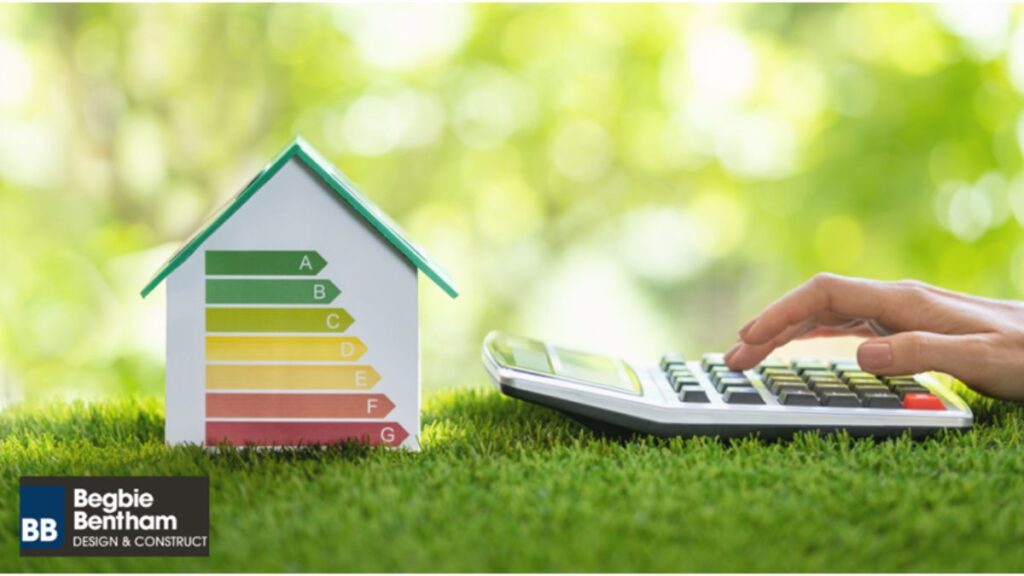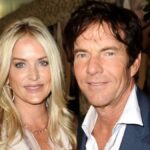Your latest electricity bill just hit $400 again, and it’s only October in Brisbane. Sound familiar? Then you’re not alone.
The thing is that most Brisbane homeowners face this frustrating reality because their homes weren’t designed for our unique subtropical climate. However, the energy-efficient homes in Brisbane can slash those bills by around 30% while keeping you comfortable year-round.
At Begbie Bentham, we’ve spent over 22 years helping Brisbane families create homes that work with our climate. We understand the pain of choosing between comfort and crushing energy costs.
Here’s what we’ll cover to help you make better decisions:
- Brisbane’s 7-star energy standards and what they mean for your build
- The costs, timelines, and available rebates for building energy-efficient homes
- Passive design strategies that work in our humid summers
- Managing humidity and thermal comfort in Brisbane
Stick with us to learn how your next home can deliver genuine comfort and long-term savings.
What Makes Energy-Efficient Homes in Brisbane Different from Standard Builds
Three factors make Brisbane’s energy-efficient homes different from standard builds:
- Specialized climate requirements
- Advanced construction techniques
- Year-round performance demands.
The thing is, when you build in Brisbane, you’re dealing with National Construction Code 7-star requirements that measure everything from heating systems to natural light usage. That means every aspect of your home needs to work harder than homes in cooler climates.
Here’s where it gets difficult: Brisbane’s local climate brings 29-30°C summers with high humidity that demands specialized ventilation and thermal mass strategies.
The reason this becomes complicated is that, unlike Melbourne or Sydney, our subtropical conditions create moisture challenges that standard systems simply can’t handle. When you combine this with Queensland’s specific climate requirements, the technical demands become significantly more complex.
Once you understand what’s required, the construction differences become obvious. The essential upgrades include:
- High-performance windows: Essential for preventing the heat gain that occurs through standard glazing in our intense summer sun.
- Enhanced external walls insulation: If you skip proper wall insulation, heat will penetrate your home throughout Brisbane’s long summer months.
- Thermal bridge-free construction: Without this specialized technique, your air conditioning will run constantly just to maintain livable temperatures.
Though a standard 6-star build might feel comfortable in autumn and spring, it becomes expensive and uncomfortable during humid summers and cool winter nights.
Now that you understand what makes energy-efficient construction different, let’s examine the investment required for these upgrades.
The Real Cost of Building Energy-Efficient Homes
The best part about investing in energy efficiency is that you’ll see returns within your first year of living there. But let’s be honest about the upfront investment you’re looking at.
Here’s what the numbers look like when you break down the costs:
What You’ll Pay Upfront for Energy Efficiency
You’ll pay anywhere from $3,000 to $6,000 for energy efficiency while planning a new build.
For Brisbane specifically, meeting the new 7-star energy standards adds around $3,000 to a standard build. This cost covers specialized construction techniques that most standard builders don’t use.
For example, good site orientation and strategic window placement become essential parts of the building design rather than afterthoughts. Your builder needs to carefully position living areas to capture natural light while blocking harsh western sun, and install high-performance windows that reduce heat gain.
When you plan these features during the design phase, you avoid the much higher costs of retrofitting them later.
Timeline and Energy Savings You Can Expect
Timeline adds 2-4 weeks for energy assessments, specialized installations, and passive house certification processes that ensure optimal energy consumption. So while you’re waiting those extra weeks, your builder sets up heat recovery ventilation and thermal bridge-free construction to save money long term.
What most people don’t realize is that the Queensland government estimates new energy-efficient homes save an average of $185 per year on electricity bills. That means your investment starts paying back from day one. The savings add up quickly.
Sure, it’s not yacht money, but it beats watching your cash disappear into thin air every summer.
Available Rebates and Financing Options
Queensland solar rebates, green building loans, and feed-in tariffs offset initial investment costs while delivering reduced energy usage. Depending on your specific location in Queensland, the federal solar rebate (STCs) alone can reduce your costs by around $2,000-$2,500.
Also, the Australian government’s Household Energy Upgrades Fund provides low-cost financing options that can make these upgrades more affordable upfront. When you factor in the long-term comfort benefits and lower running costs, most Brisbane families find the investment worthwhile.
Helpful Tip: Start researching rebates and financing options before you finalize your design. This approach lets you plan your build to qualify for the maximum available funding.
Once you understand the investment required, the next step is knowing which passive design solutions work in Brisbane’s unique climate conditions.
Passive Design Solutions That Work in Brisbane Heat
Ever wondered why some Brisbane homes stay comfortable year-round without huge electricity bills? The secret lies in passive design, which uses natural elements like sunlight, airflow, and thermal mass to maintain indoor comfort. You don’t have to rely heavily on air conditioning or artificial heating.
In this section, we’re going to cover the specific passive design strategies that deliver results in Brisbane’s subtropical climate.
Orientation and Natural Ventilation for Brisbane Homes
The first step to reducing your heat load is getting the orientation right from the start.
If you get good orientation paired with strategic natural ventilation, your Brisbane home gains several advantages. Here’s what happens:
- Lower energy costs: Proper positioning reduces your reliance on artificial lighting during the day and keeps heat inside manageable. So you end up cutting air conditioning use and dropping your energy bills month after month.
- Year-round comfort and energy efficiency: Want comfort and low running costs together? Then you should design for cross-ventilation that captures Brisbane’s prevailing breezes, creating natural air movement that maintains comfortable internal temperatures.
- Better indoor comfort and well-being: After you set up proper airflow, fresh air moves throughout your dream home. This eliminates that stuffy feeling and supports healthier living in eco-friendly homes.
When you combine north-facing living areas with well-placed windows and doors, you create a passive house design that works with Brisbane’s climate rather than fighting against it.
Heat Recovery and Managing Brisbane’s Humidity
Concrete thermal mass combined with heat recovery systems manages humidity without sacrificing indoor comfort. That’s why most experienced builders add these passive house design principles to every project they create for Brisbane families.
Here’s the thing: the way thermal mass works in our climate is different from that in southern cities. The reason comes down to temperature patterns. What makes Brisbane different is that our warm nights mean you need materials that can absorb heat during the day and release it slowly overnight.
Another benefit is that these systems handle Brisbane’s high humidity levels remarkably well and maintain comfortable moisture levels without that sticky, uncomfortable feeling.
Plus, the ventilation filters and controls humidity while keeping your home’s air quality high and your energy bills low.
We recommend adding heat recovery ventilation systems that work alongside thermal mass to remove stale air and bring in fresh air without losing your cooling energy.
After all, there’s no point building an energy-efficient home if you end up feeling like you’re living inside a rainforest terrarium.
Your Next Step Towards Comfortable, Affordable Living
Brisbane homeowners face rising energy costs and uncomfortable homes that weren’t designed for our subtropical climate. However, with the right passive design approach and quality construction methods, you can solve these challenges without breaking your budget.
We’ve covered the costs of building energy-efficient homes in Brisbane, from the $3,000 average investment to available rebates that offset your expenses.
Then you’ve also learned which passive design solutions work in our humid climate and how to choose builders who understand these specialized techniques.
Now you know how to make informed decisions about your new home. If you need any further guidance, our team will be happy to help.







